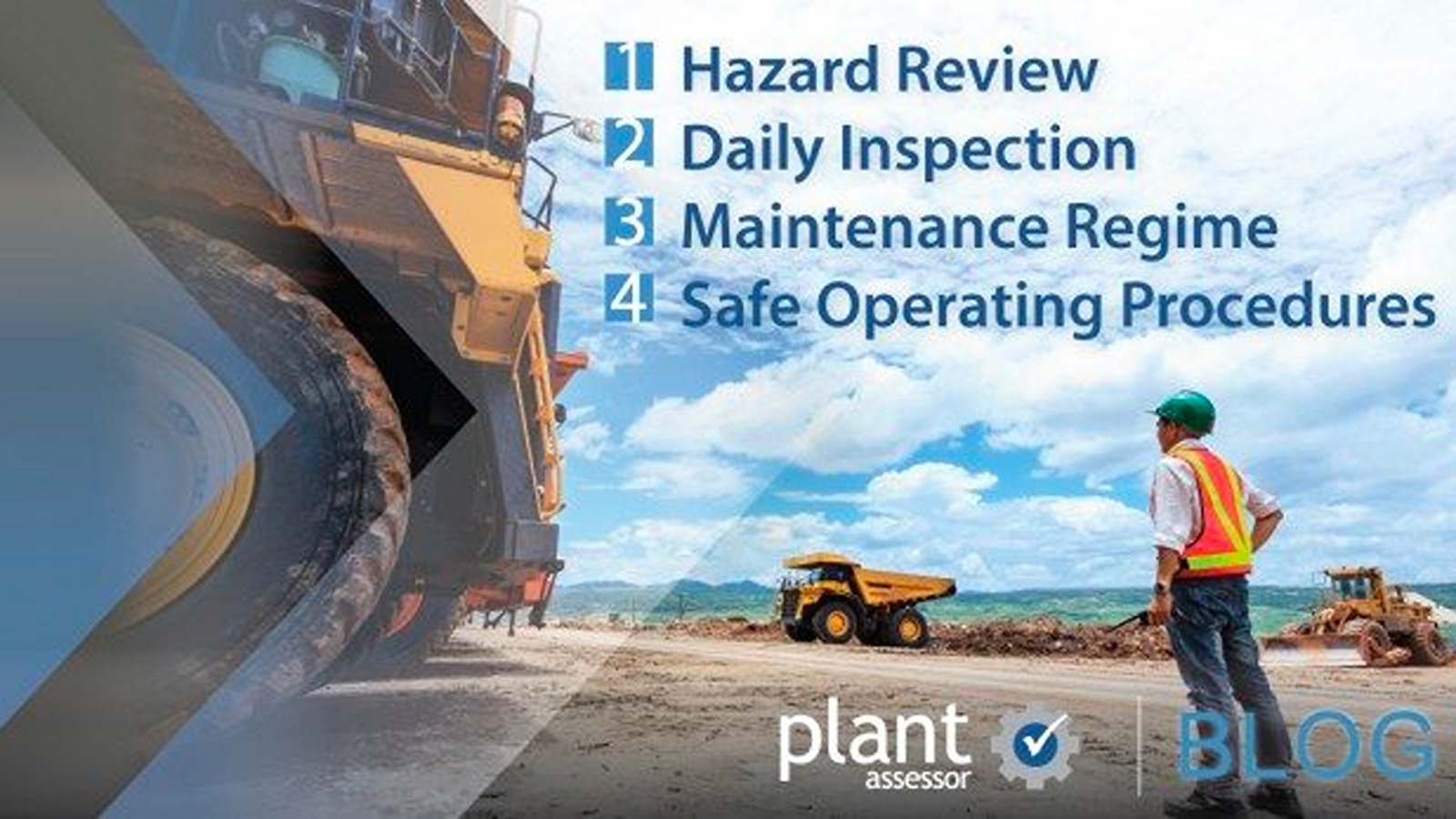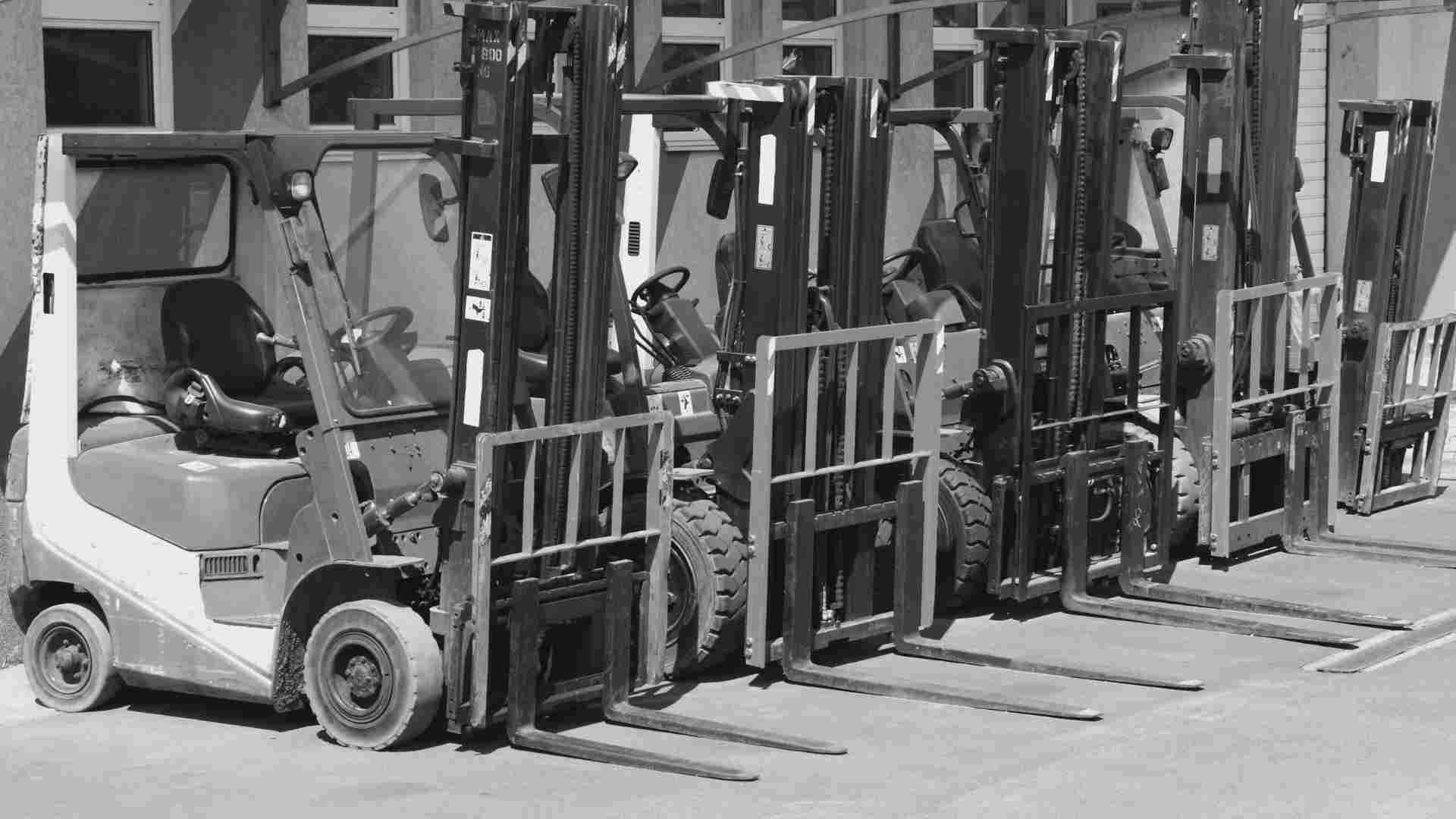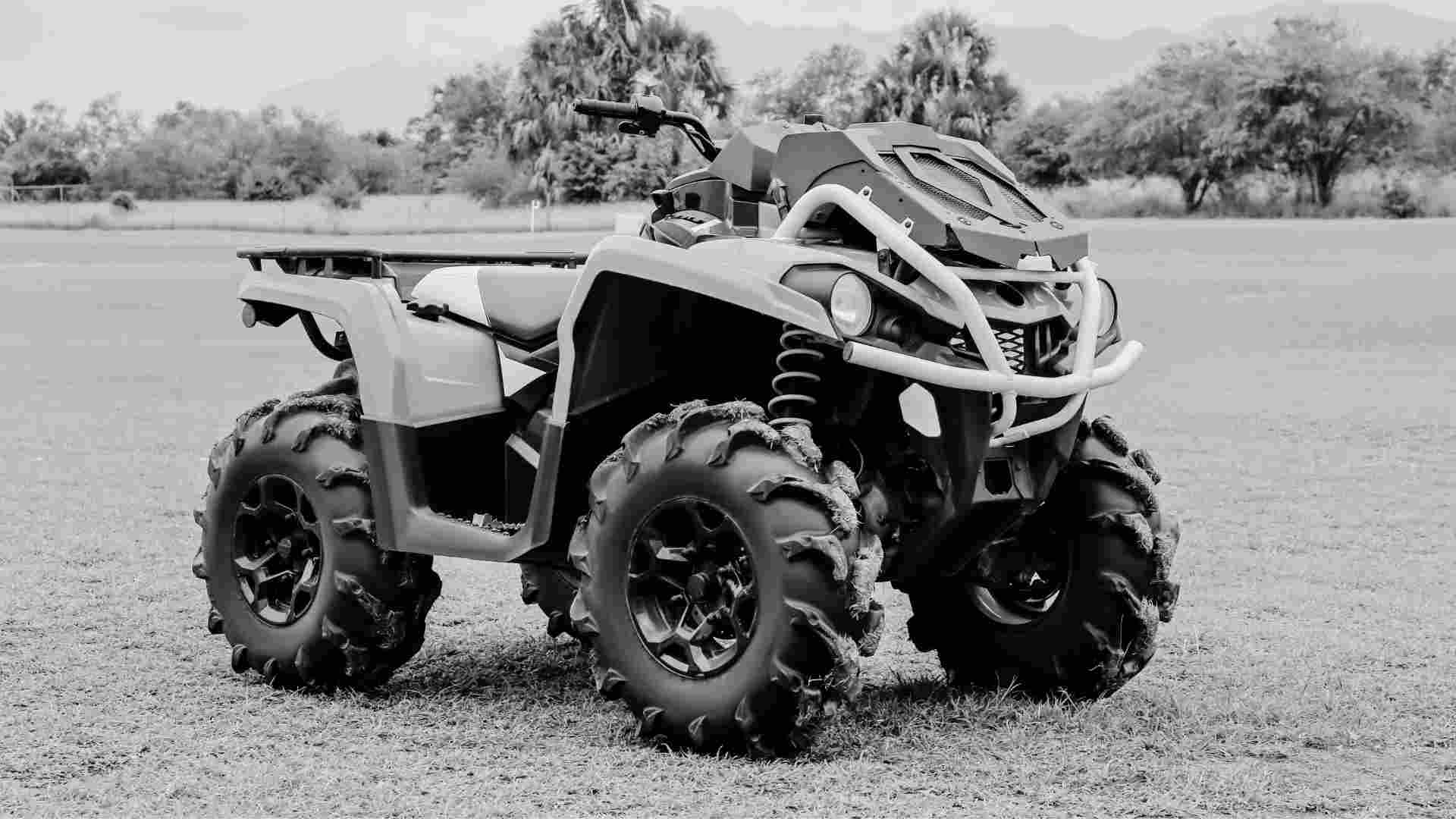The ultimate guide to forklifts
Forklifts, also known as lift trucks, are essential machines used across various industries for material handling, lifting and transporting heavy...
|
|
Machinery Pre Starts
|
|
|
Risk Management &
|
|
|
Document Management
|
|
|
Dashboards & Reporting
|
|
|
Machinery Risk Assessments
|
|
|
Service & Maintenance
|
|
|
Safe Operating Procedures
|
|
|
MySite
|
|
|
View All Features |

As outlined in previous posts, the three essential ingredients of effective plant safety management are 1. Ensuring safe plant, 2. Ensuing safe operators, and 3. Ensuring a safe environment (safe sites and tasks).
Today we take a look at the first – and most obvious – safe plant. How can you ensure the plant and machinery at your worksite is the safest it can be?
The process of ensuring safe plant can be boiled down to just four focus areas.
This needs to be done taking into account WHS legislation, Australian and International Standards and leading industry practice.
It identifies controls in place and how to maintain these effectively, based on risk, the resulting document should be used for operator education and machine induction, and proof the machine has been assessed.
You need to follow the plant risk assessment process when you receive the plant and periodically based on the risk of each piece of plant or machinery. Plant & equipment suppliers (including contractors) have an obligation to provide this information as well.
Finally, it is important to remain aware of the pitfalls and subjectivity of the traditional manual plant hazard assessment process.
To meet WHS obligations, you need to have a documented daily inspection procedure and fault rectification to identify and minimise hazards BEFORE they cause a workplace injury.
Subject to the type of equipment you are using, the pre-start check should cover: Fluids (Fuel/Oil/Water); Tyres/Tracks; Guards; Screens & Mirrors; Lights & Beacon; Seat & Seat Belt; Gauges; Horn/Warning Devices; Hydraulics & Brakes.
And while a good rule-of-thumb is to conduct a pre-start check at least daily, keep in mind some plant may need more regular checking, such as at shift change.
The records of this process need to be stored by at least a year – preferably longer, especially if a piece of machinery has been involved in an incident.
Don’t wait until something breaks down before you fix it! Instead, you need to implement a proactive and robust maintenance regime.
Ask any professional fleet/asset manager – not only do you have a legislative duty to proactively maintain your plant and equipment – it will actually be cheaper in the long run, as it will result in less downtime.
OEMs are pretty particular in detailing their recommended service and maintenance requirements, so this is a good place to start. On board telematics in modern machinery also contain a plethora of information to assist monitoring of equipment condition and identifying the need for predictive maintenance.
The pre-start check and fault repair process is obviously an important component of any proactive maintenance regime.
With any piece of plant or equipment, it’s important to not only develop and implement standard SOPs, but also to train operators to work within those SOPs. We’ll consider operator training and competency assessment in a separate post.
Each SOP should be a simple, easy-to read guide (preferably no more than a page or two), covering such things as any hazards and controls associated with the plant. They should be reviewed regularly (how often depends on the perceived risk of the plant).
There is a growing recognition of certain weaknesses of paper procedures. We’ll investigate these, and the alternatives to paper procedures in a future post.
If you would like more information about how to better manage plant safety in your workplace, please contact Plant Assessor on 1300 728 852 or contact us.
Disclaimer: This information is intended to provide general information on the subject matter. This is not intended as legal or expert advice for your specific situation. You should seek professional advice before acting or relying on the content of this information.

Forklifts, also known as lift trucks, are essential machines used across various industries for material handling, lifting and transporting heavy...

We all know machinery and its operation can be inherently dangerous.

The Queensland Government has changed regulations relating to the use of quad bikes in workplace settings within the state.